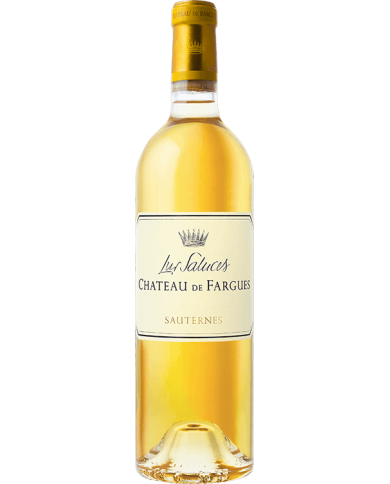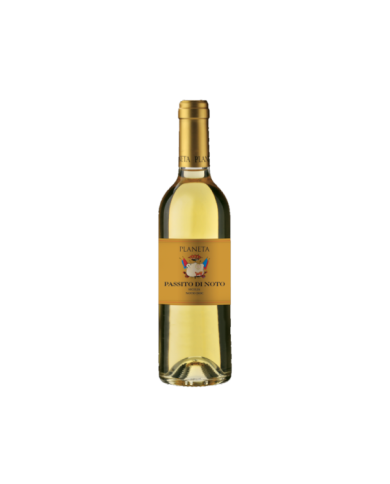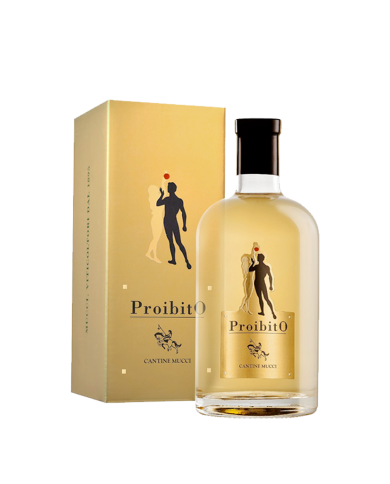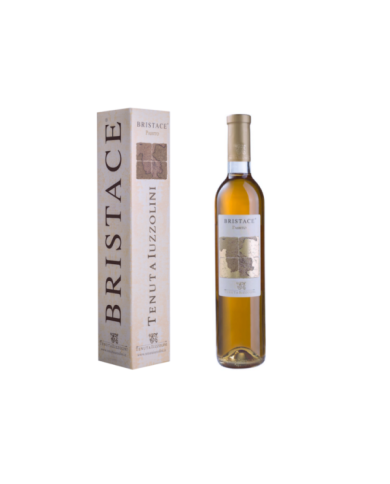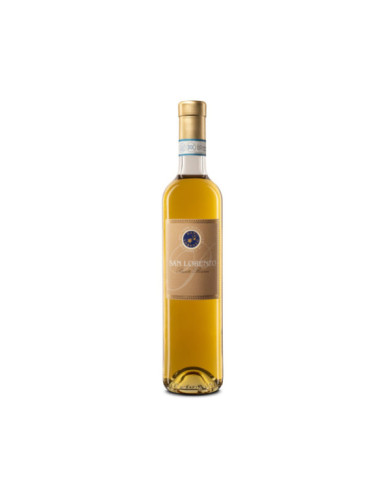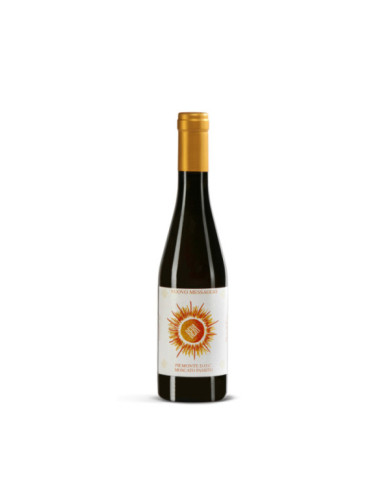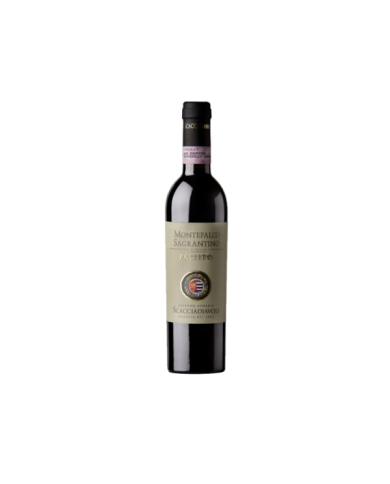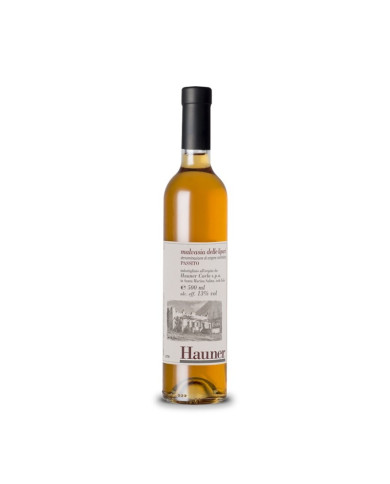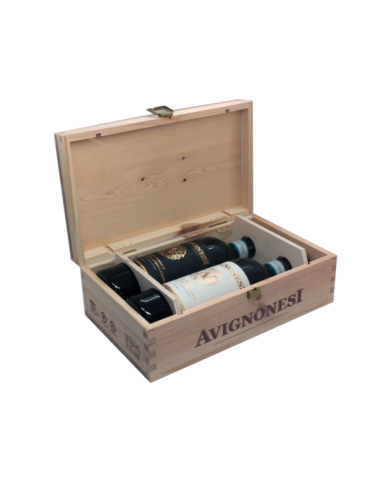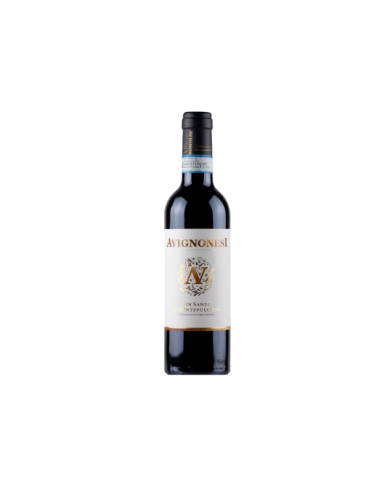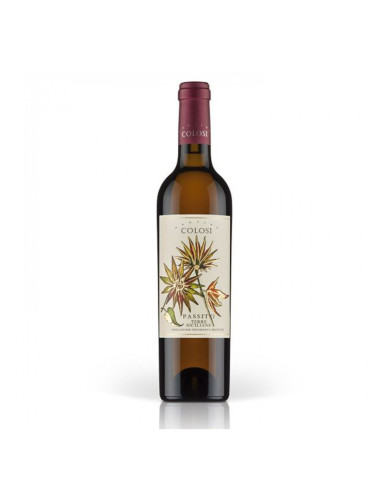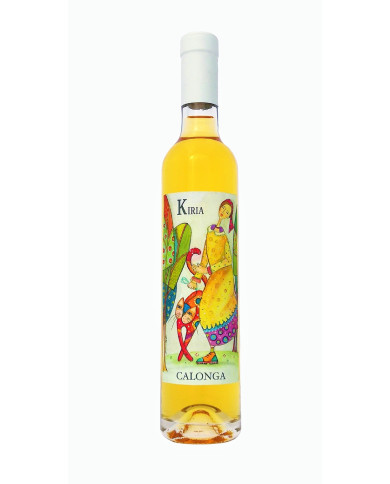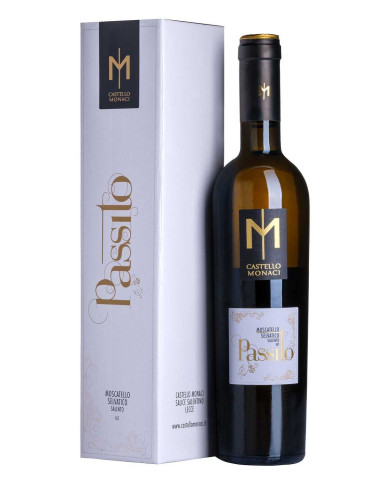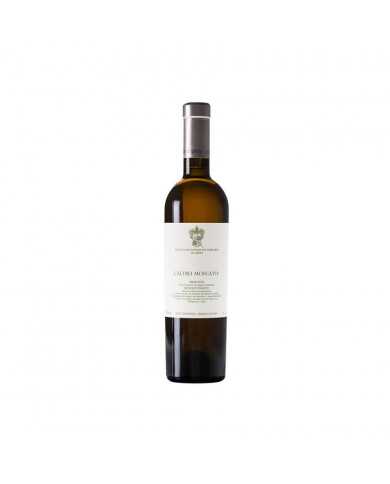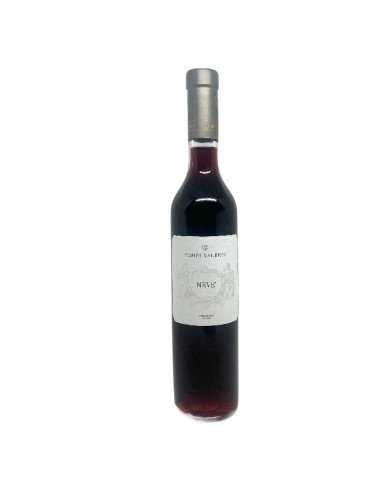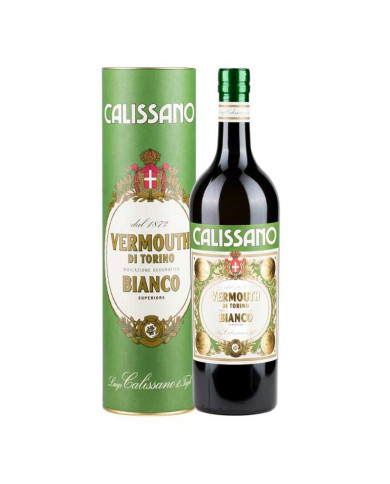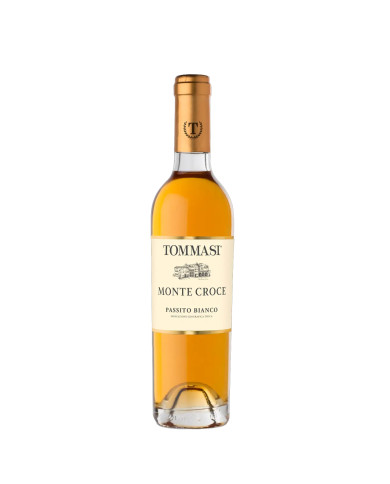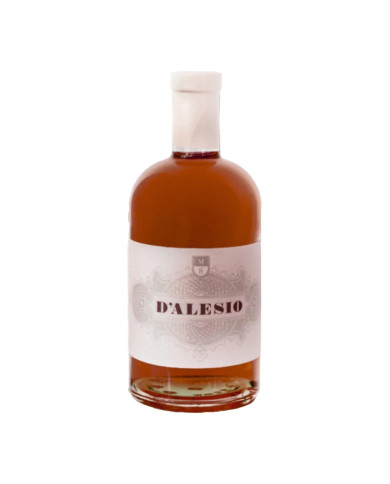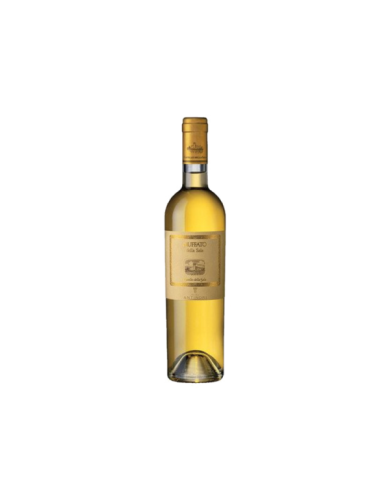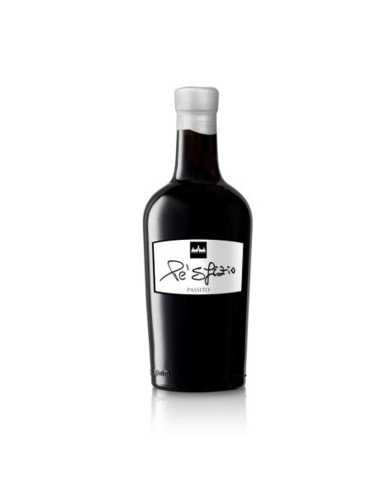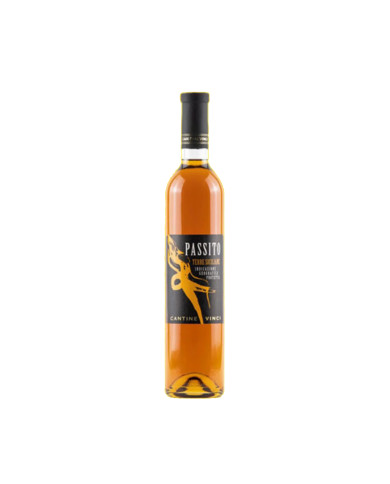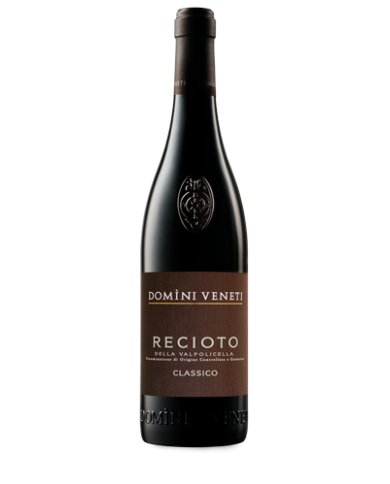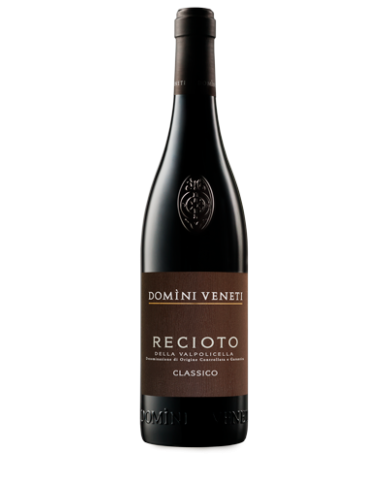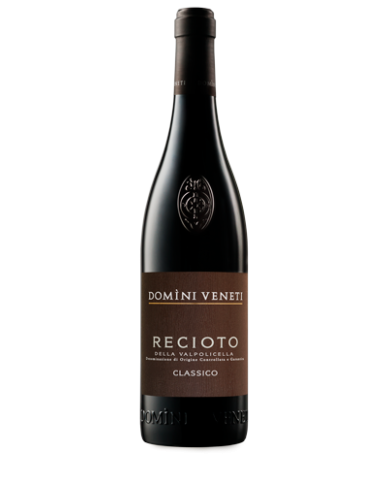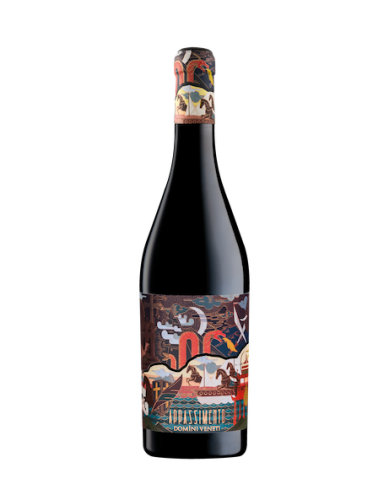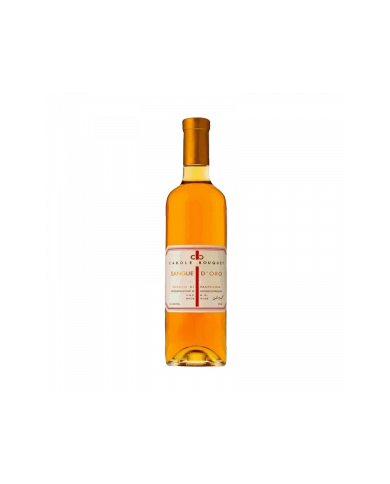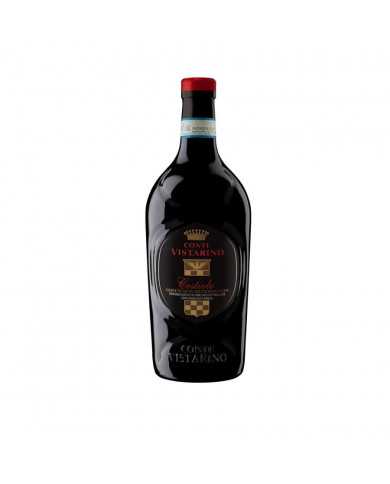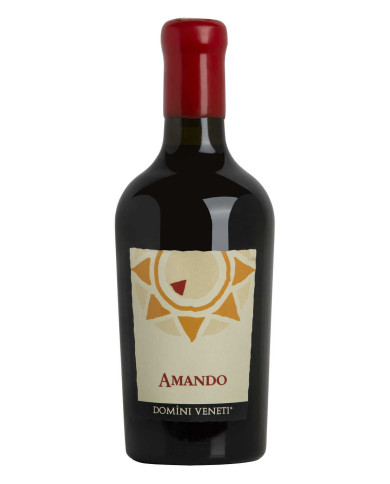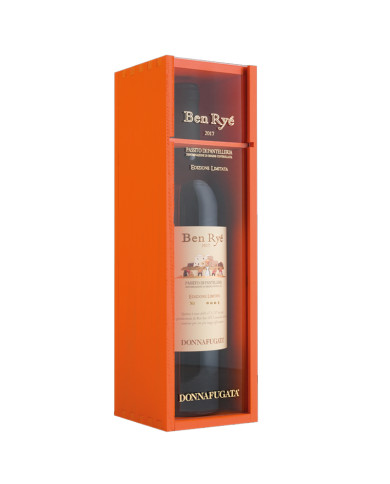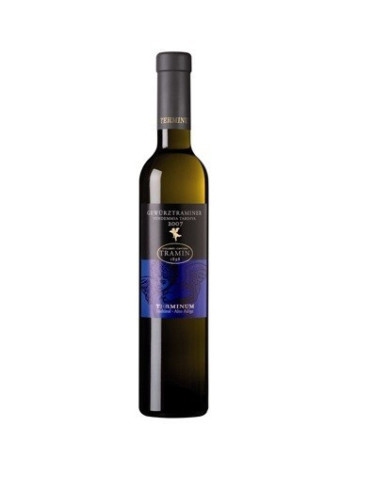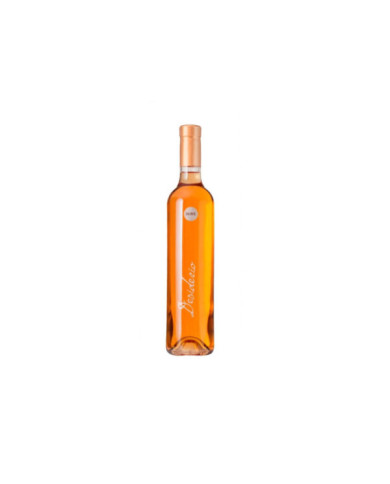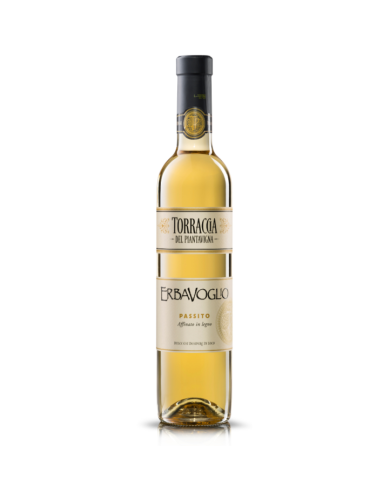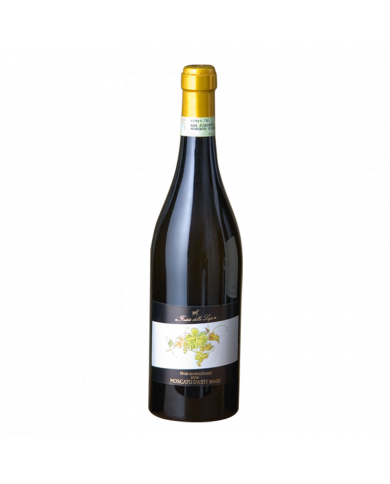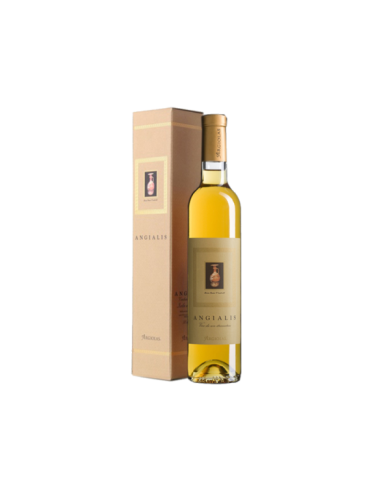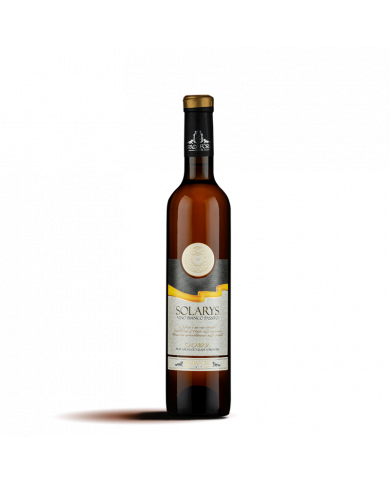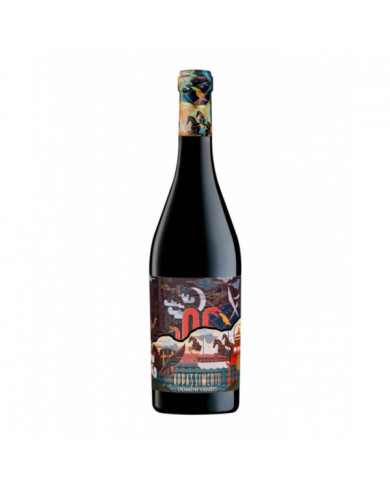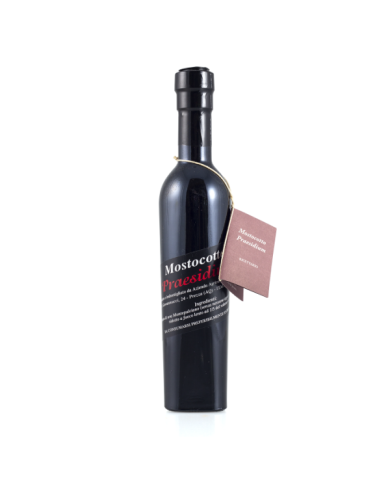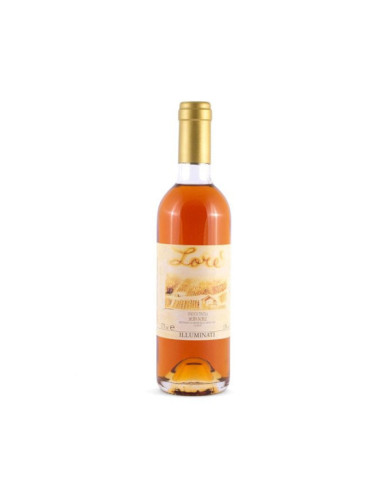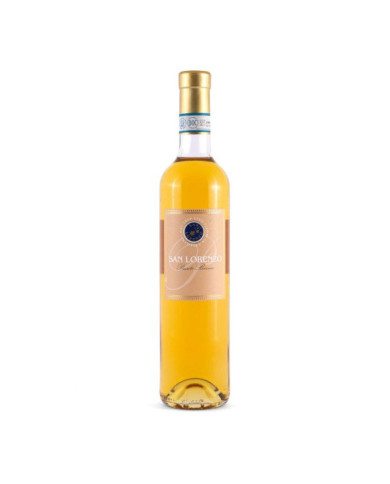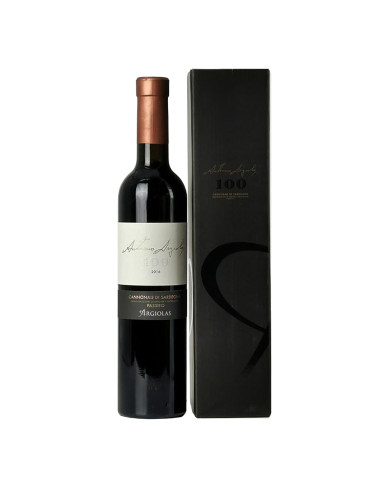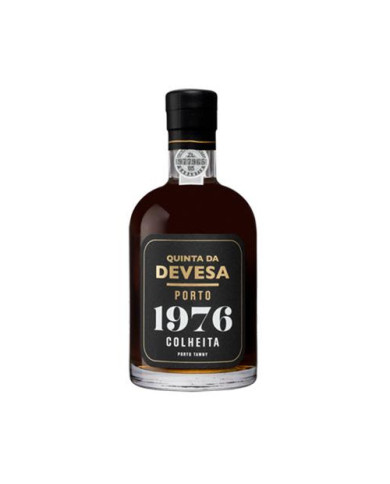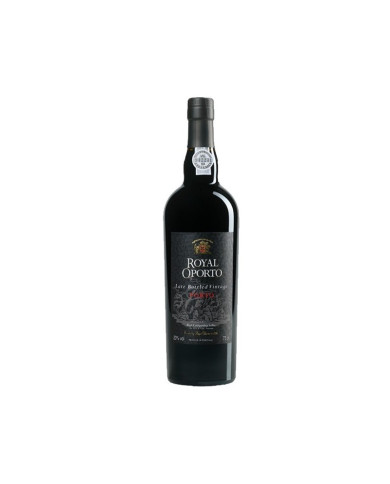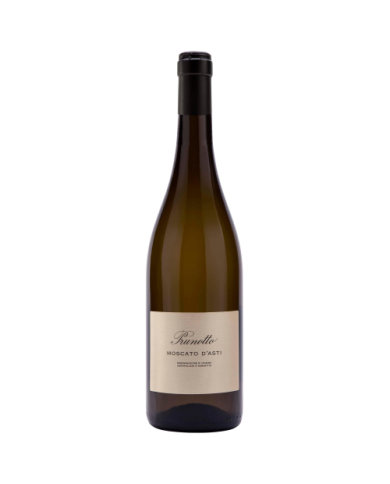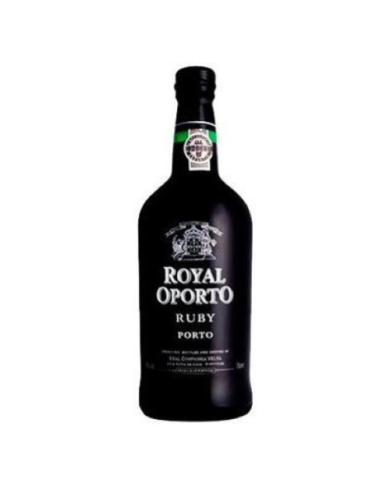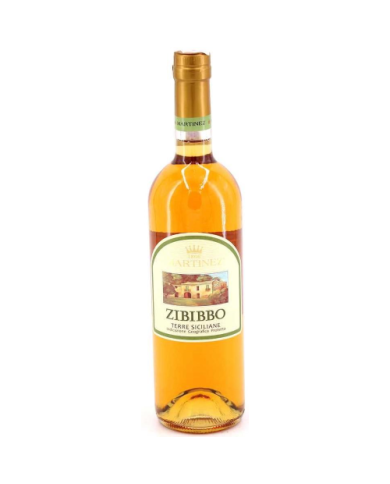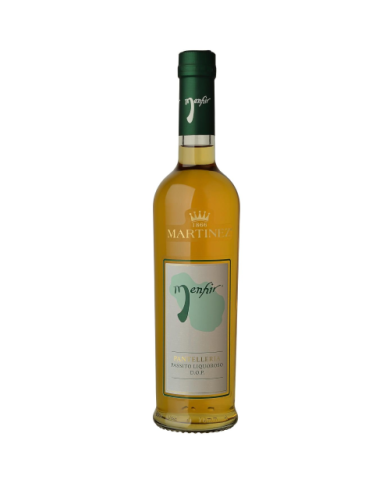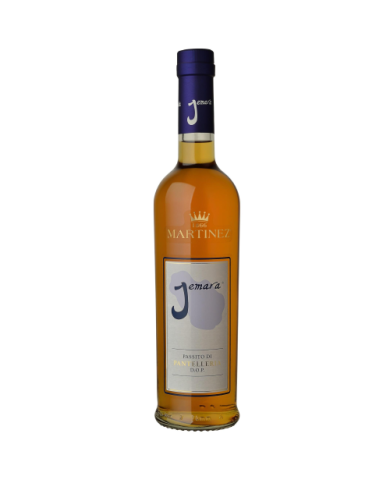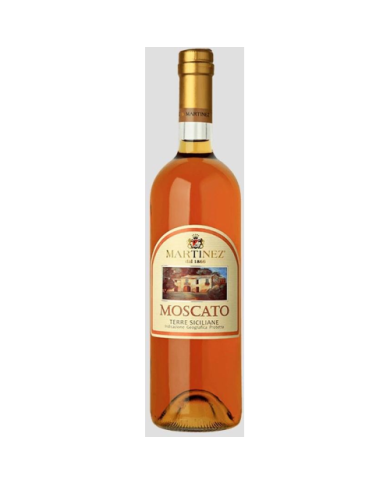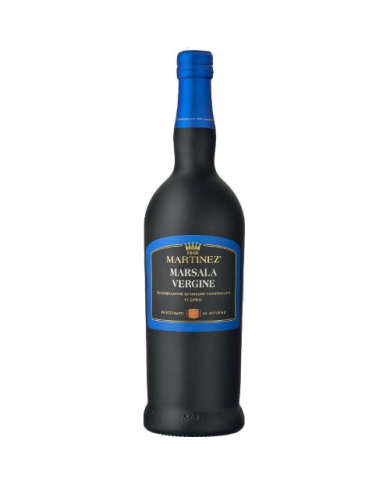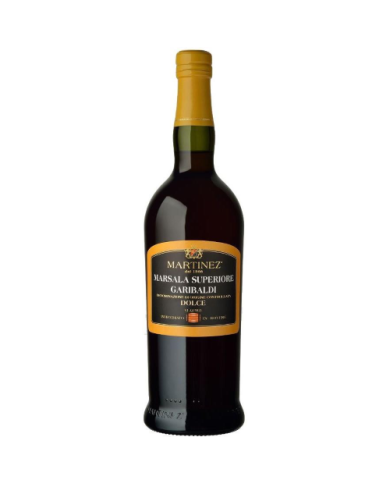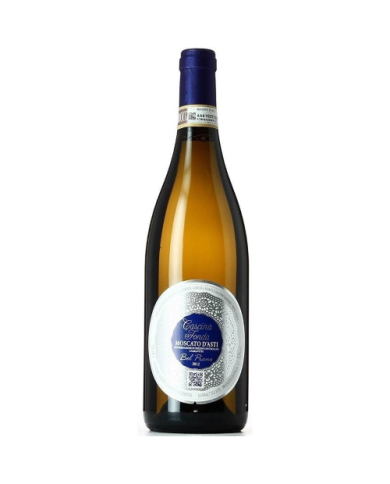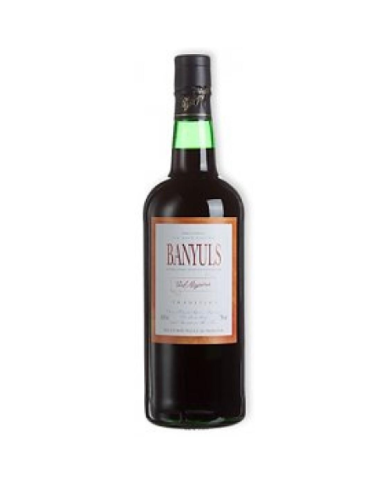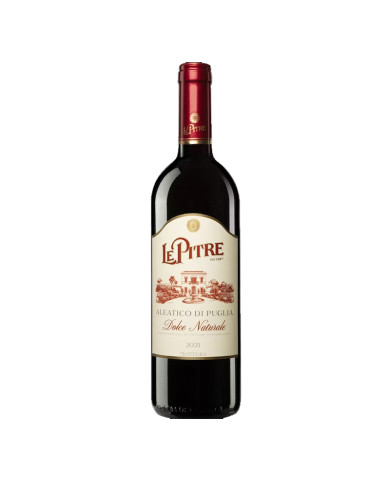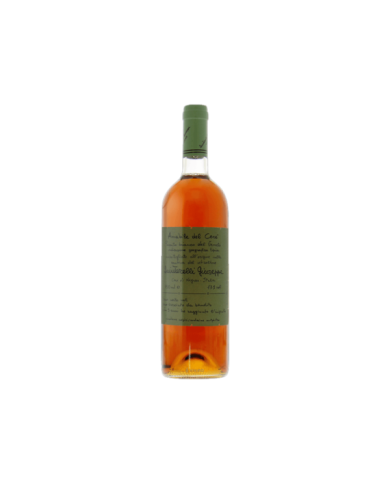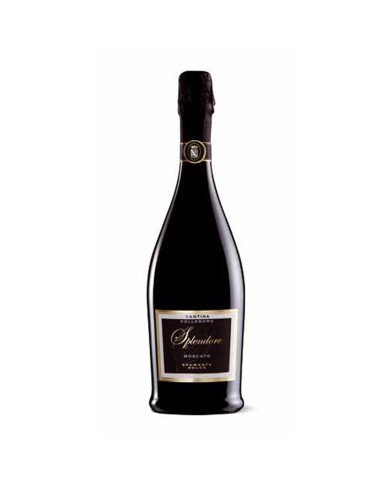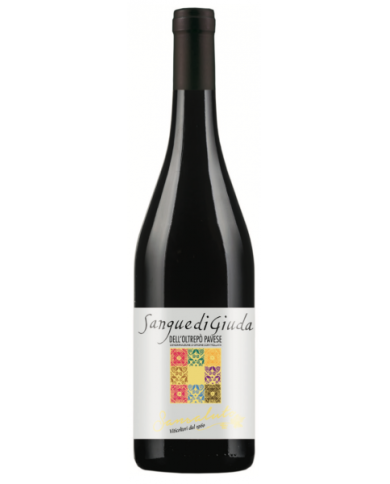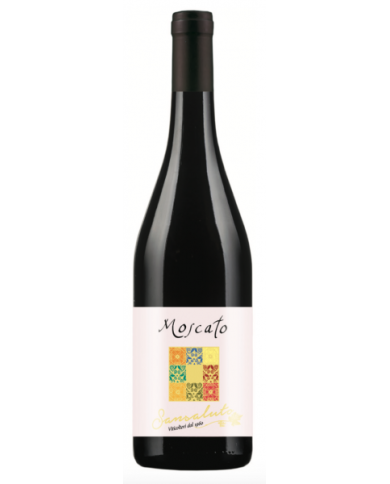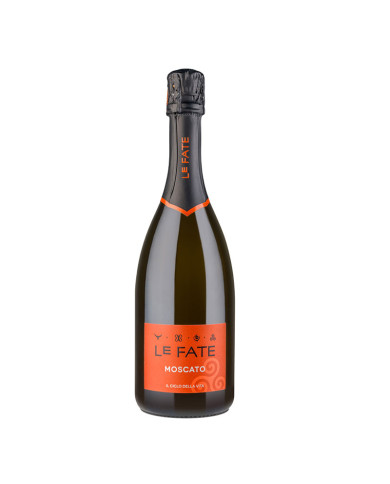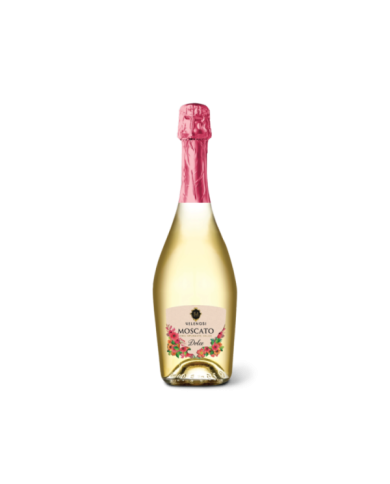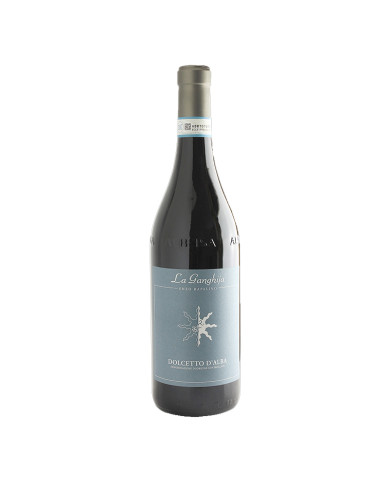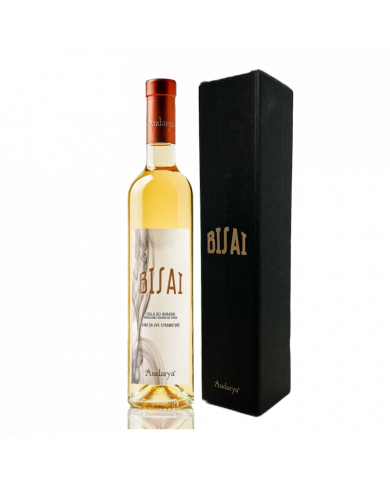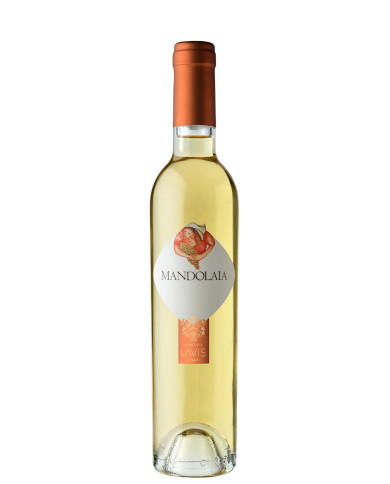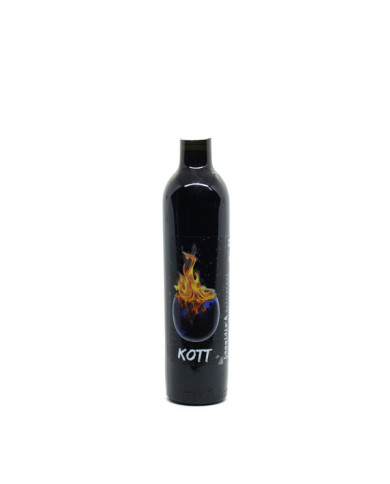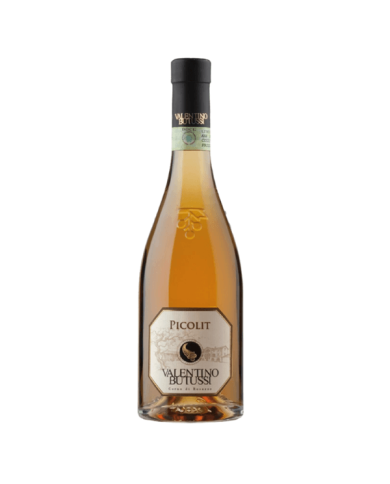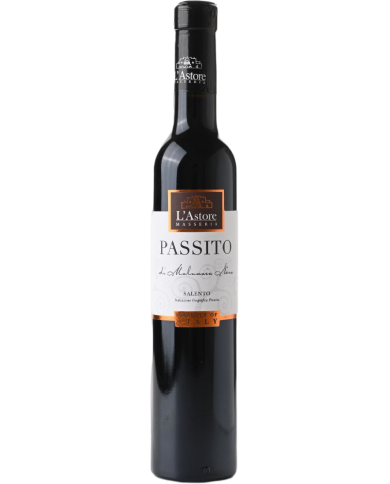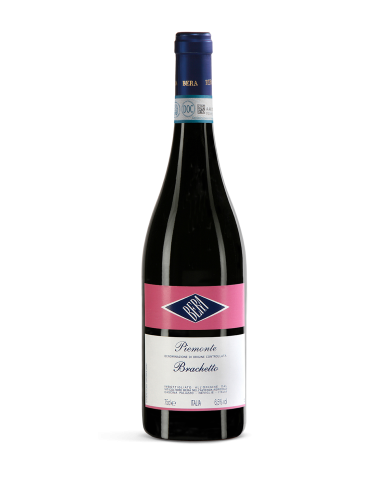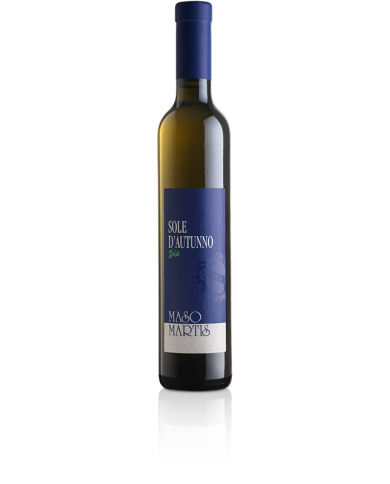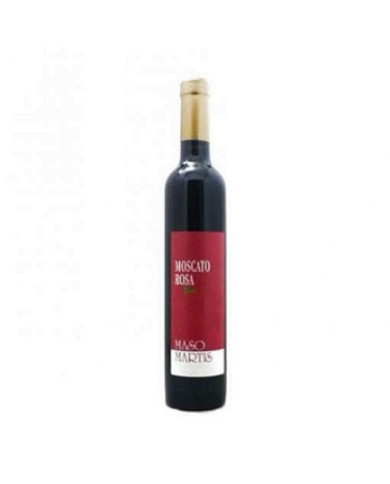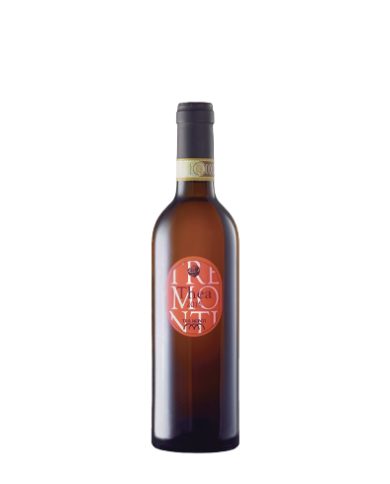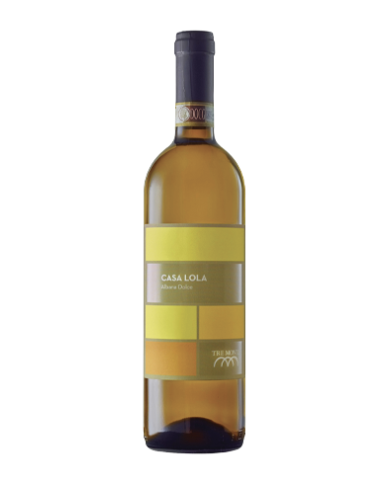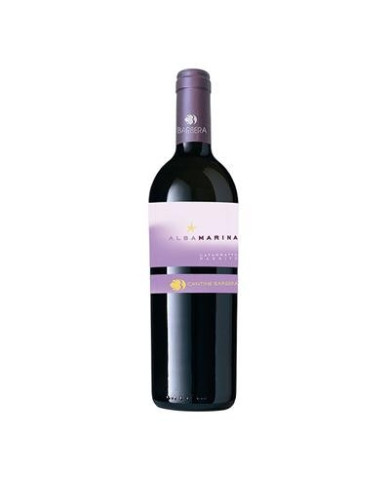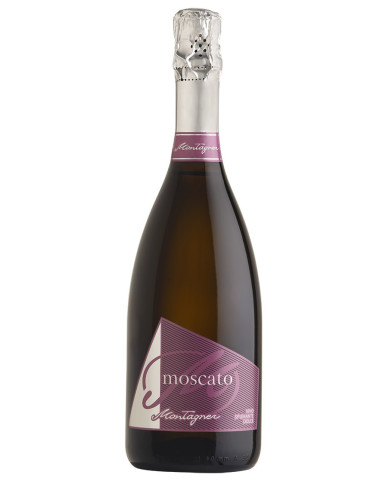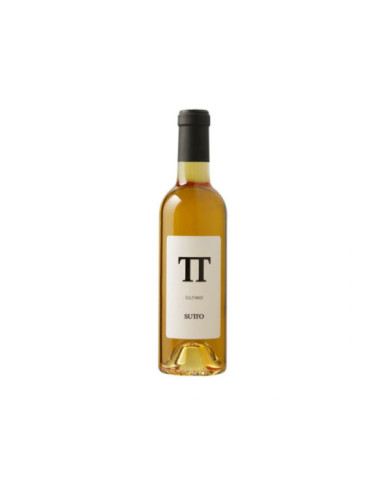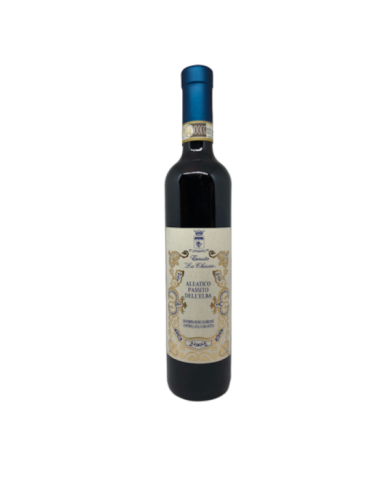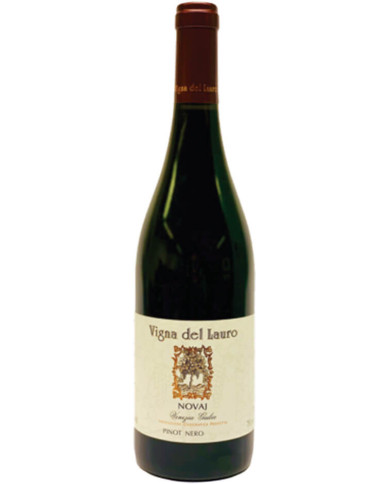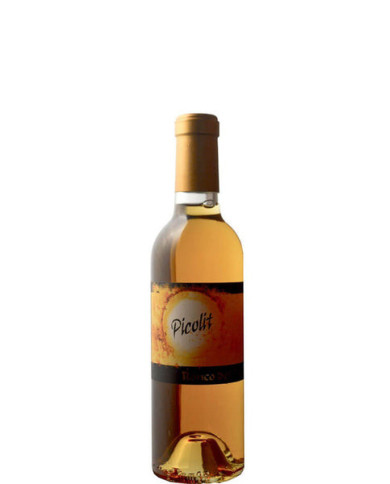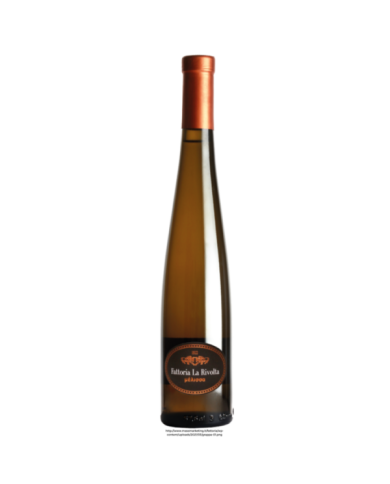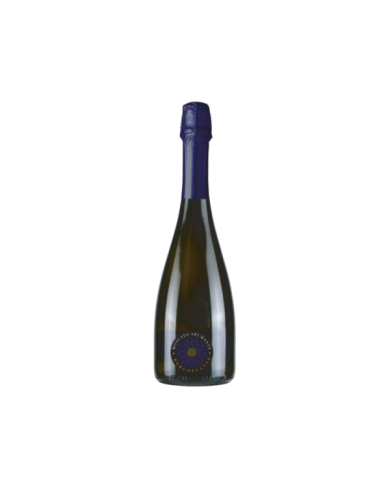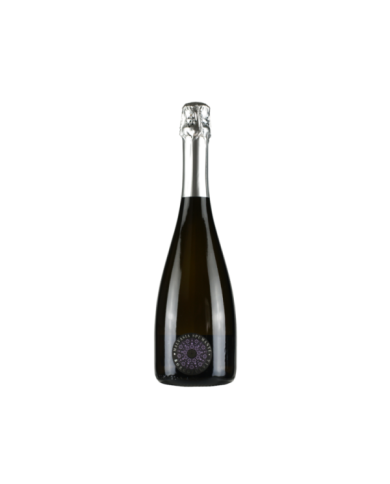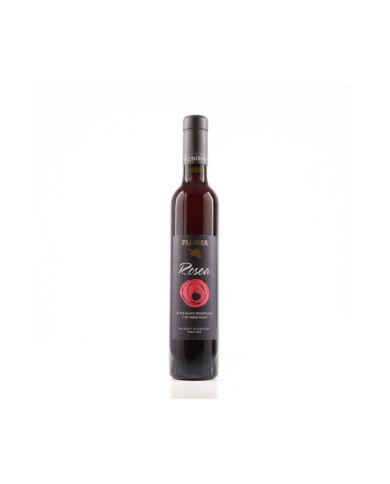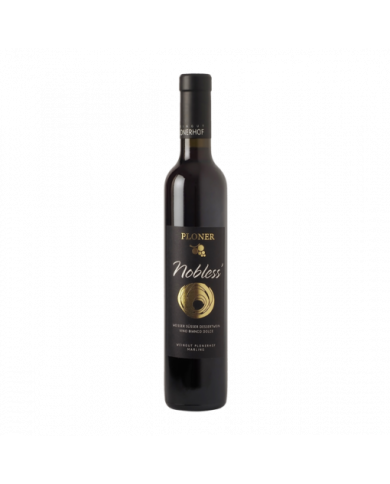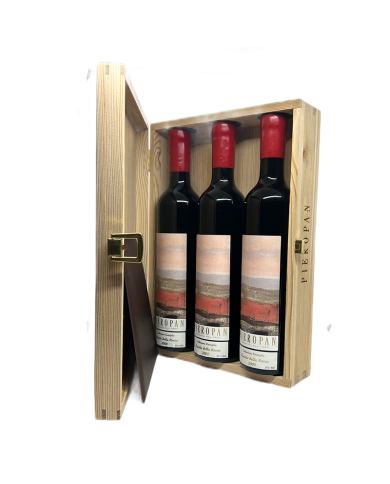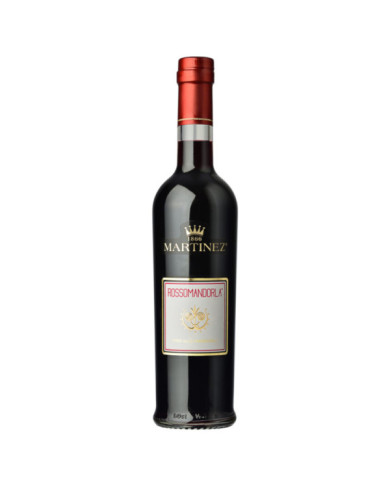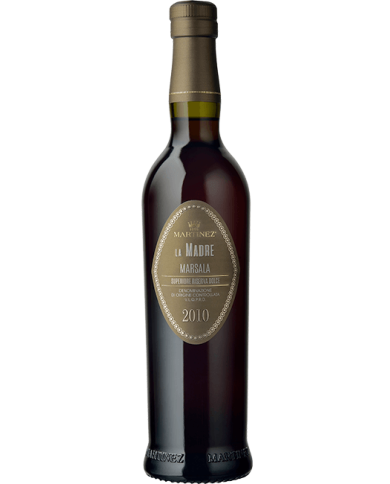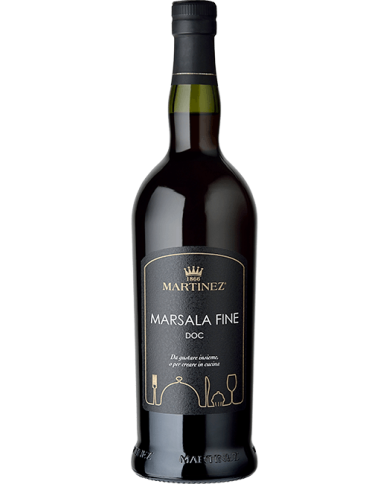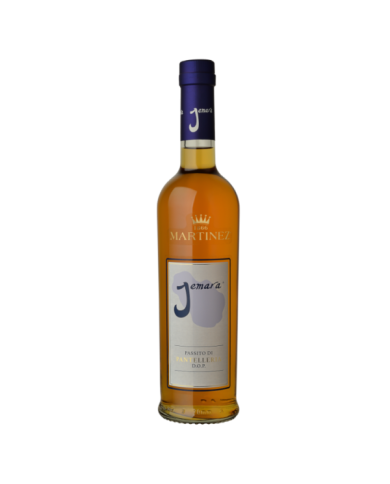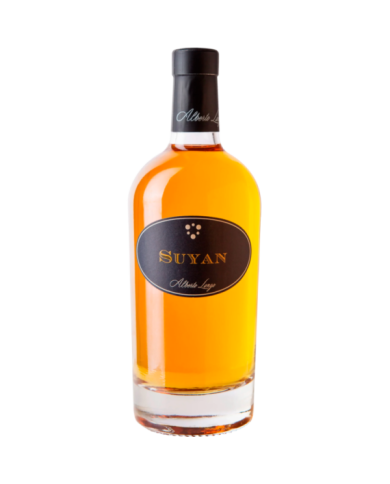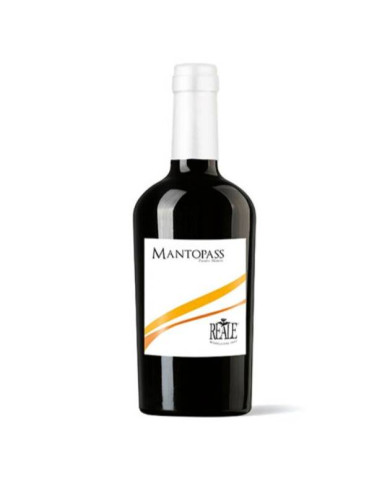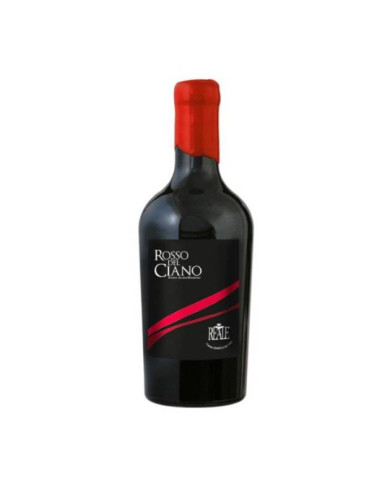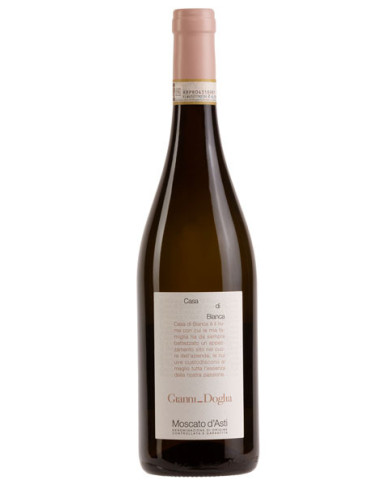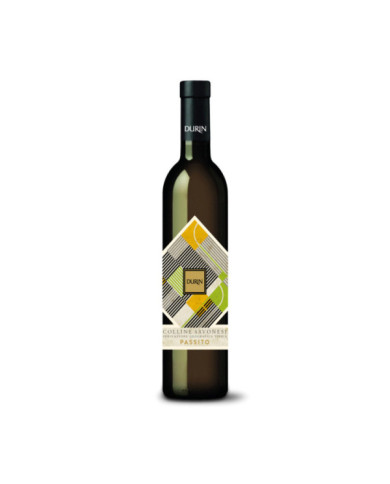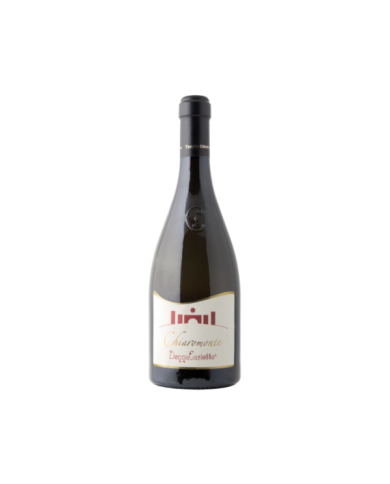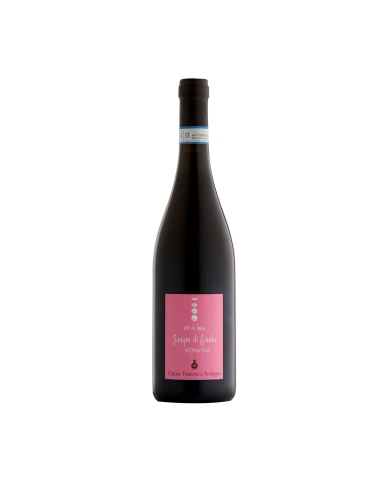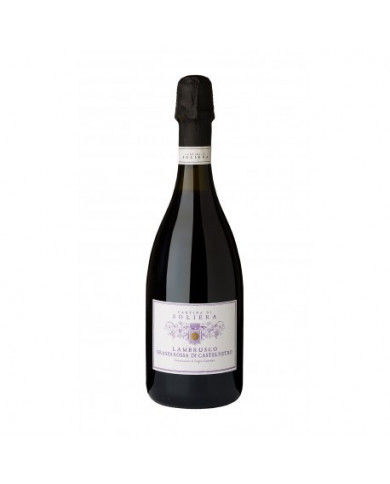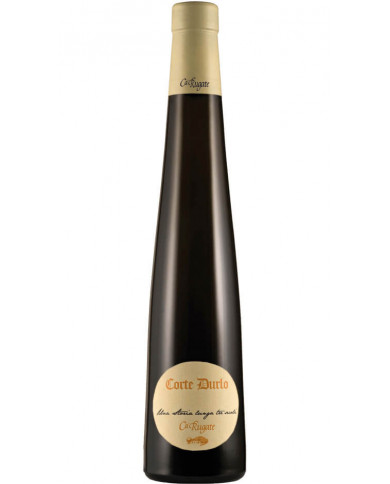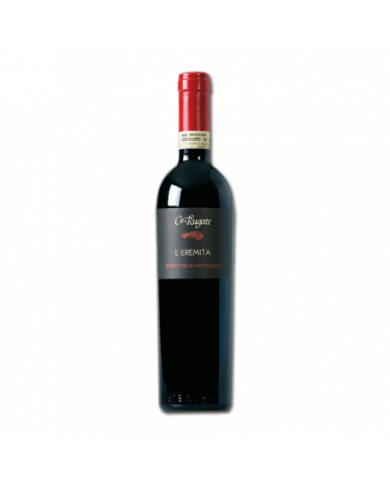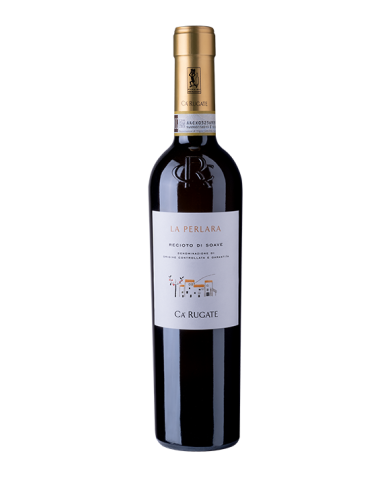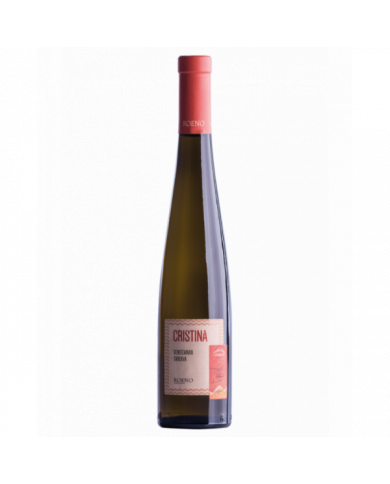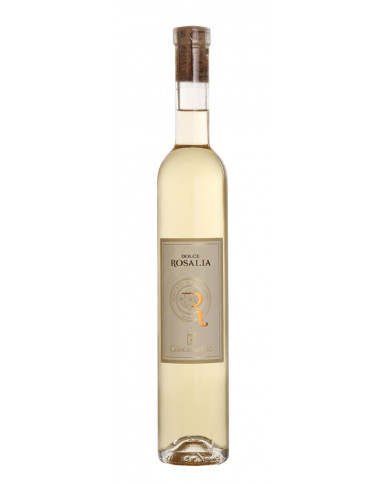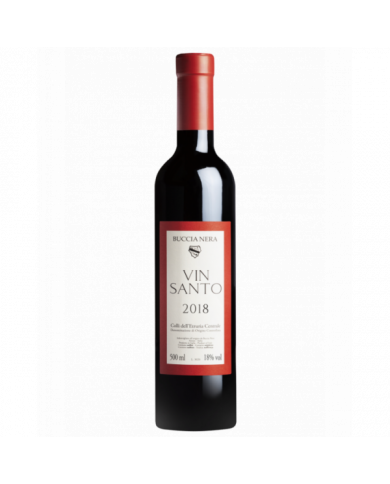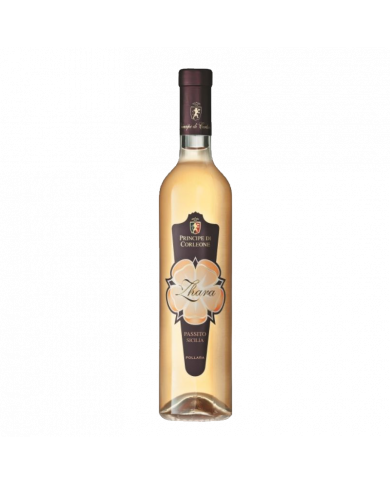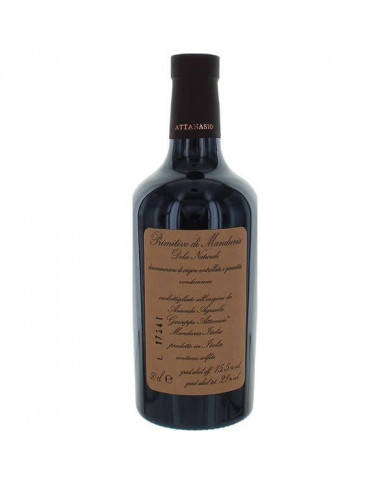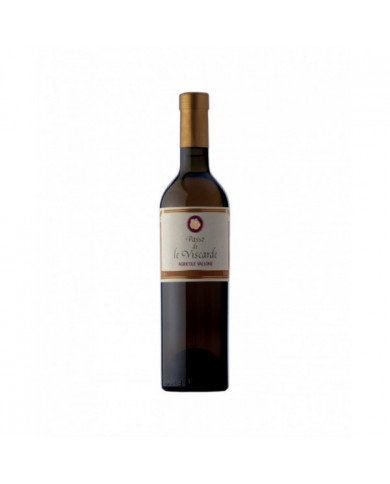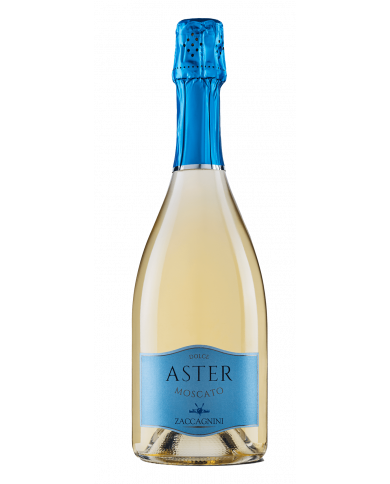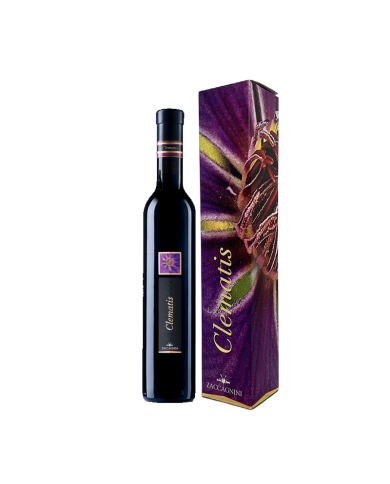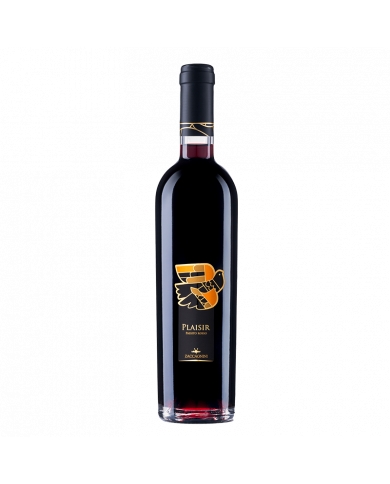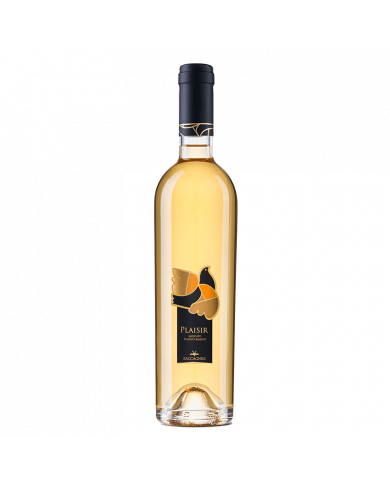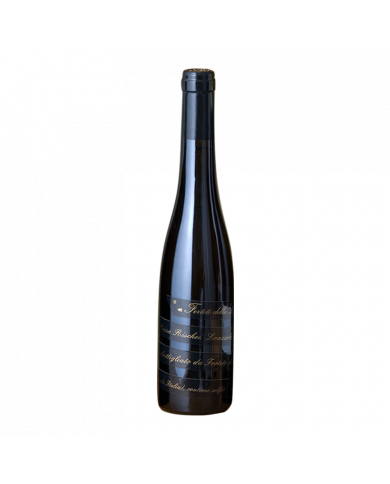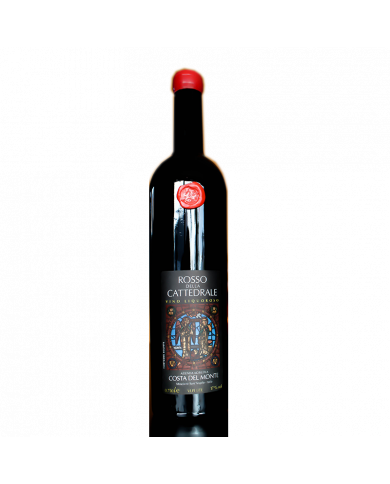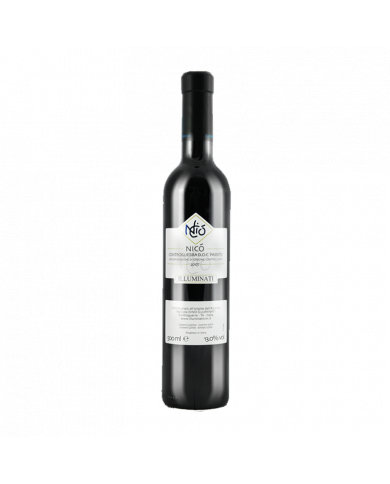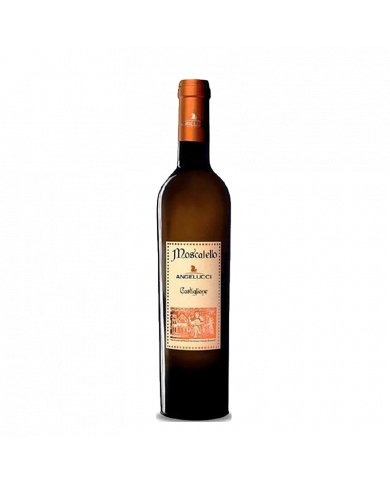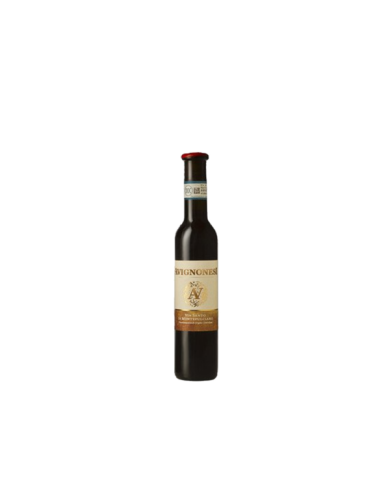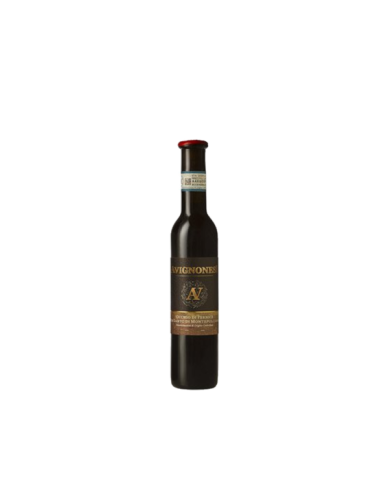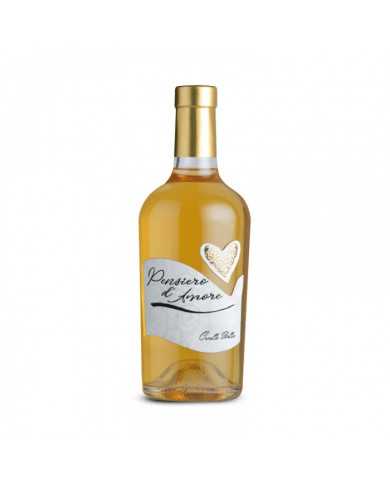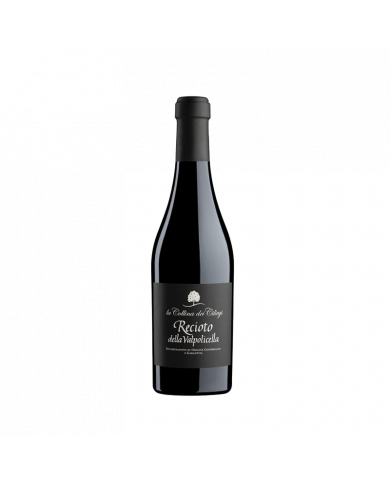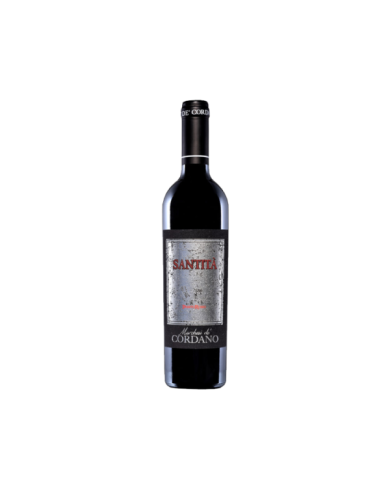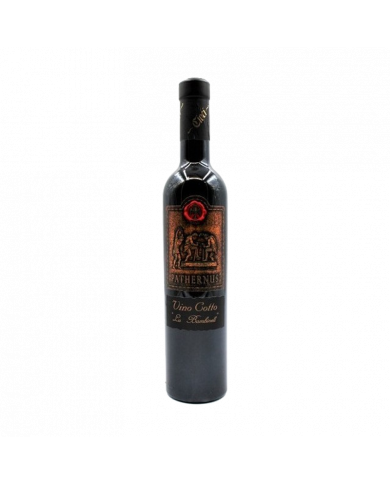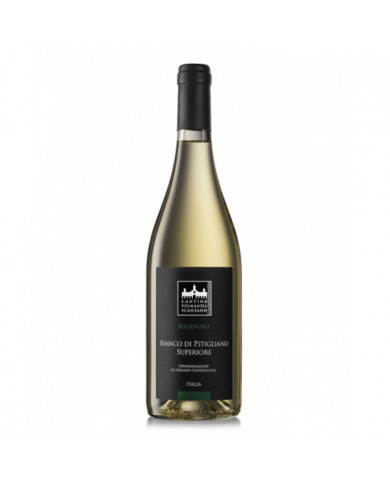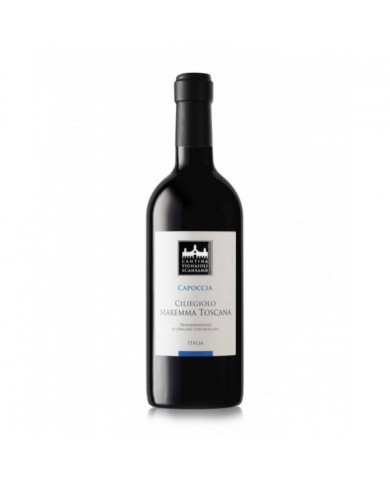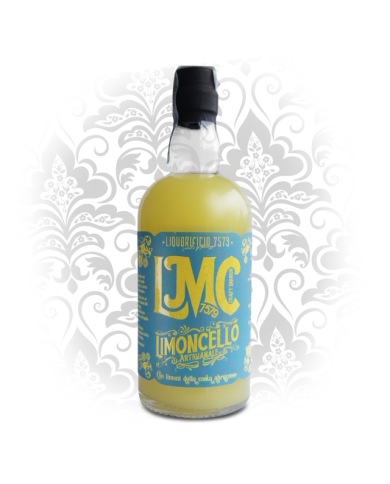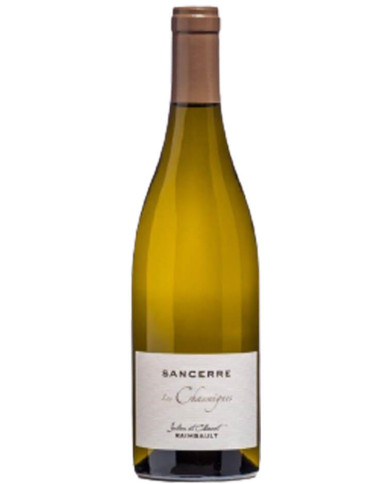Il Sauternes Lur Saluces A.O.C. 1997 del Chateau de Fargues ├© una gemma rara nel mondo dei vini dolci, emblema di eleganza e raffinatezza. Questo Sauternes, proveniente dalla prestigiosa area della regione di Bordeaux in Francia, ├© prodotto da una sapiente vendemmia tardiva, dove le uve sono lasciate sulla vite fino ad ottobre o novembre per beneficiare del nobile muffa Botrytis cinerea, che concentra zuccheri e aromi dando origine a vini di straordinaria complessit├Ā e longevit├Ā.
Il Sauternes Lur Saluces A.O.C. 2013, prodotto dall'illustre Chateau de Fargues, rappresenta un esemplare straordinario di vino dolce della regione di Bordeaux. Questa annata 2013 si distingue per la sua eleganza e bilanciamento eccezionale, frutto di una vendemmia accuratamente selezionata e di un clima favorevole quell'anno.
Il Sauternes Lur Saluces A.O.C. 2007 prodotto da Chateau de Fargues rappresenta un esemplare straordinario di vino dolce, considerato uno dei gioielli della regione di Bordeaux, Francia. L'annata 2007 si distingue per la sua complessit├Ā e finezza, risultato di un'annata particolarmente favorevole che ha permesso una perfetta maturazione delle uve e una concentrazione ottimale degli zuccheri.
Il Sauternes Lur Saluces A.O.C. 2010 del Chateau de Fargues ├© un vino bianco dolce, prodotto nella celebre regione di Sauternes in Francia. Questo vino ├© noto per la sua complessa metodologia di produzione, che coinvolge l'uso di uve affette dalla "Botrytis cinerea", un fungo noto anche come "muffa nobile". Questo processo conferisce al vino un'eccentrica complessit├Ā aromatica e un equilibrio delizioso tra dolcezza e acidit├Ā.
Il Sauternes Lur Saluces A.O.C. 2016, prodotto dal prestigioso Chateau de Fargues, ├© un vino bianco dolce di ineguagliabile eleganza e complessit├Ā, apprezzato dai collezionisti e dagli amanti del vino di tutto il mondo. Questo vino rappresenta una delle espressioni pi├╣ raffinate della regione di Sauternes, famosa per i suoi vini dolci da dessert.
Excellent year, the grapes were harvested perfectly healthy and so they were preserved during the drying. Very dense, with high sugars and extracts that lead to consider the Vin San Giusto 1997 suitable for a long aging.
Il mostocotto ├© un prodotto tipico della tradizione casalinga abruzzese. Esso ├© presente nelle nostre case sin dal tempo degli antichi romani i quali utilizzavano questo liquido denso per addolcire e arricchire il sapore dei cibi oltre che, aggiunto allŌĆÖacqua, per ottenere una bevanda dissetante ed energetica. Nelle opere degli scrittori latini Apicio, Catone, Columella e del poeta Ovidio, nato a Sulmona, si trovano testimonianze dellŌĆÖuso del Mostocotto. Attualmente viene utilizzato come ingrediente nellŌĆÖimpasto di vari dolci tradizionali locali. Il mostocotto Praesidium ├© un succo dolce e denso, ottenuto durante il periodo della vendemmia facendo bollire, a fiamma diretta e moderata per 12-16 ore, il mosto fiore, proveniente al 100% da uve selezionate Montepulciano dŌĆÖAbruzzo. La lavorazione ├© lunga e delicata al punto che da 10 litri di mosto se ne ricavano circa 2 di mostocotto Praesidium. Il mostocotto non contiene alcool. Pu├▓ essere accompagnato a formaggi molto stagionati o ricotta, bollito misto o verdure grigliate. Pu├▓ essere usato per farcire dolci e macedonia di frutta o, nel modo pi├╣ tradizionale, come ingrediente nellŌĆÖimpasto di dolci locali abruzzesi. Arricchisce il sapore delle pere al forno
Amabile del Cere is a white passito from Veneto made from various white grapes. It is a blend based on chardonnay, garganega, Tuscan trebbiano and sauvignon. The grapes are harvested at the end of September, followed by drying in wooden boxes and pressing in January, when the botritys worked at full capacity on the volume and sugar residue of the bunches. Quintarelli 's passito is then aged for 5 or 6 years in French oak. Exquisite, sublime, delicate. The fifth essence of sweetness. The amber color, the notes of bergamot, candied fruit and spices accompany a vertical, delicate and engaging sip. A passito from the past, with an enormous potential for spectacular evolution. A meditation wine to be savored on rare occasions, excellent with dry or sliced desserts.
Excellent with dry desserts, but also with soft cakes made with bitter chocolate or with berries. Try it with particularly tasty mature or blue cheeses.
The combination we suggest is a goose foie gras escalope, but perfection is achieved in a glass, in front of the fireplace in good company!
Excellent in combination with pastry desserts, fruit tarts, homemade focaccias and even desserts with creams.
The Aleatico Passito dell'Elba docg 2021 is a natural passito obtained from the aromatic Aleatico vine, native to the island of Elba. After the harvest which generally takes place during the first half of September, the grapes are dried on special racks in the open air for a period of about 10-15 days. Vinified in steel containers at a controlled temperature. Maceration on the skins for about 7 days.
From one of the oldest vines in the world, Moscato Bianco, our Passito di Noto is born. Passito is an ancient wine that becomes current with a modern drying system. Explosive aromas of exotic fruit, jasmine, candied citrus, it is both complex and easy to love. The ideal companion of the great Sicilian tradition of sweets and ice cream.
It has an amber yellow color with golden reflections. The aromas are intense and persistent and recall dried and candied fruitŌĆ”
Tuscan VinsantoŌĆ” a wine whose origins are lost in the mists of time. Vinsanto in Tuscany is such an important wine full of meaning that it was difficult to buy, it was an ambition to make it at home with your own hands; in every family there was a person in charge of this art, usually the father or grandfather. The hypothesized origins of this exquisite drink, as well as those of its singular name are different and are lost in the mists of time. A Sienese legend says that in the 14th century a friar distributed a wine that healed the sick, hence the belief that it was a miraculous wine, "Santo". However, it cannot be excluded that the name "holy" derives from the use that has always been made of it during Mass.
This sweet wine has a unique style. The red color is impenetrable, the scent evokes blackberries, dried fruit and cinnamon, the taste is of a singular balance. In fact, the dense texture of tannins imprisons acidity and sweetness and everything is confused, creating a gustatory sensation of harmonious fullness. It is thanks to the drying of Sagrantino grapes on racks that such a concentration is obtained. Originally Sagrantino grapes were used only for the making of this sweet wine, drunk on the occasion of religious ceremonies in the villages of the area.
Packaging in wooden box containing 1 "Vin Santo di Montepulciano 2005" + 1 "Vin Santo di Montepulciano" Occhio di Pernice "2005" in 375 ml bottle. A quality sweet wine that reveals new, surprising flavors with every sip: figs, almonds, lemon and coffee beans, while a perfect balance between acidity and sweetness complements the sensual aftertaste.
Avignonesi 's Vin Santo di Montepulciano is a sweet wine of great elegance obtained from Malvasia and Trebbiano and aged for 10 years in casks. The nose releases intense aromas of caramel, chocolate, honey, orange peel and Mediterranean herbs. The taste is rich and enveloping with notes of figs, almonds, lemon and coffee
The Muffato del Castello della Sala, one of the estates of the Marchesi Antinori , is a bright and persuasive sweet wine. On the nose it is a wine that reveals itself of great aromatic and gustatory intensity, with hints of candied fruit, honey, iodized and almost marine hints on a citrus hint. On the palate it is enveloping and the botrytizing process gives a sweet sensation well integrated into that of freshness that emerges after the sip
Ben Ry├® Donnafugata is one of the most famous Sicilian passito wines in Italy and in the world, which has become a paradigm of Passito di Pantelleria. Its name in Arabic means "daughter of the wind", an epithet attributed to this Mediterranean island, struck by winds that blow on the bunches of grapes and on the crops, bringing with them intense and very characteristic aromas , the same ones we find in wine. The image that decorates the label is created by the designer Nicola Vitale and illustrates the work and effort of the winemakers in this area, illuminated by intense sunlight, with the 'dammuso', a typical architecture of the island in the background.
AROMATIC AND LAMINATED GRAPES
Angialis Isola dei Nuraghi Igt by Argiolas is a wine with an intense straw yellow color. On the nose they result in very intense primary aromas, markedly Mediterranean. Terpenic characters typical of Nasco.
The name of this label recalls the one and only architect of its being, it is in fact the sun The name of this label recalls the one and only architect of its being, it is in fact the summer sun of our beloved land, the summer element of our beloved land, the element that determines its organoleptic characteristics. which determines its organoleptic characteristics. A raisin wine of great value, our Solarys bianco, a late harvest of grapes from A raisin wine of great value, our Solarys bianco, a late harvest of grapes from autochthonous vines, grown as saplings, left on the plant to dry gradually until the autochthonous vine , grown as saplings, left on the plant to dry gradually until reaching the natural sugar concentration; sweet, never cloying, a delicate to reach the natural sugar concentration; sweet, never cloying, a delicate nectar to be served chilled, with fresh fruit tarts or blue cheeses.
Drying of native red grapes and the traditional method blend together in this wine, the result of a blend with a rigorous character. The unique style expresses elegance and pleasantness, enhancing the territory as the main protagonist of the production philosophy.
Il mostocotto ├© un prodotto tipico della tradizione casalinga abruzzese. Esso ├© presente nelle nostre case sin dal tempo degli antichi romani i quali utilizzavano questo liquido denso per addolcire e arricchire il sapore dei cibi oltre che, aggiunto allŌĆÖacqua, per ottenere una bevanda dissetante ed energetica. Nelle opere degli scrittori latini Apicio, Catone, Columella e del poeta Ovidio, nato a Sulmona, si trovano testimonianze dellŌĆÖuso del Mostocotto. Attualmente viene utilizzato come ingrediente nellŌĆÖimpasto di vari dolci tradizionali locali. Il mostocotto Praesidium ├© un succo dolce e denso, ottenuto durante il periodo della vendemmia facendo bollire, a fiamma diretta e moderata per 12-16 ore, il mosto fiore, proveniente al 100% da uve selezionate Montepulciano dŌĆÖAbruzzo. La lavorazione ├© lunga e delicata al punto che da 10 litri di mosto se ne ricavano circa 2 di mostocotto Praesidium. Il mostocotto non contiene alcool. Pu├▓ essere accompagnato a formaggi molto stagionati o ricotta, bollito misto o verdure grigliate. Pu├▓ essere usato per farcire dolci e macedonia di frutta o, nel modo pi├╣ tradizionale, come ingrediente nellŌĆÖimpasto di dolci locali abruzzesi. Arricchisce il sapore delle pere al forno
Prodotto dal 100% di uve moscato si presenta di colore giallo dorato con aromi che ricordano le pesche ed il miele. Un vino da dessert, ben strutturato e molto armonico. EŌĆÖ eccellente in abbinamento a formaggi stagionati o erborinati come il Roquefort e il Gorgonzola. Si sposa benissimo con il fegato grasso dŌĆÖoca.
Forteto della Luja Loazzolo is a fragrant and enveloping wine, with a deep yellow color with apricot and gold reflections. The olfactory profile reveals a rich, ripe fruit, with a prevalence of apricot notes. The "muscat" root of the fruit is evident, which a balsamic wood enriches with spicy and roasted notes. Rich and creamy on the palate, to which it unfolds in all its multifaceted sweetness and alcohol, with interesting returns of fruit, chocolate and honey. A very pleasant wine, which ends long, with an echo of vanilla and white chocolate. Constitutionally long-lived, it maintains an enviable gustatory balance for many years. Excellent meditation wine, it goes well with aged cheeses and desserts.
Piasa Rischei is the wine produced solely with Moscato grapes, left to dry on the vine and harvested at the end of October, a part of the bunches is still left to dry on mats in an orchard. After fermentation, the wine is aged in barriques for 24 months. A passito balanced between freshness and sweetness. Great evolutionary capacity. Perfect to combine with cheeses and fois gras.
From one of the oldest vines in the world, Moscato Bianco, our Passito di Noto is born. Passito is an ancient wine that becomes current with a modern drying system. Explosive aromas of exotic fruit, jasmine, candied citrus, it is both complex and easy to love. The ideal companion of the great Sicilian tradition of sweets and ice cream.
Di colore ambrato con riflessi ramati, si apre al naso con aromi fruttati perfettamente bilanciati con note speziate derivate dal passaggio in legno. Al palato risulta dolce e corposo.V ino da meditazione, questo vino fortificato ├© indicato per accompagnare i dolci secchi, la pasticceria e la frutta secca.
La vinificazione avviene macerando lŌĆÖuva passa ottenuta nel mosto di uve extramature fresche la cui seconda raccolta avviene la met├Ā di Settembre con lŌĆÖaggiunta di alcool per bloccare la fermentazione.
AROMATIC AND LAMINATED GRAPES
Angialis Isola dei Nuraghi Igt by Argiolas is a wine with an intense straw yellow color. On the nose they result in very intense primary aromas, markedly Mediterranean. Terpenic characters typical of Nasco.
Obtained thanks to the drying process of Sagrantino grapes.
Very ample wine, with great structure with a long aromatic persistence and a typical tannic finish supported by a pleasant sweetness.
Wine with great evolutionary capacities in the bottle. In fact, it can be refined in the bottle for many years, significantly improving.
Amabile del Cere is a white passito from Veneto made from various white grapes. It is a blend based on chardonnay, garganega, Tuscan trebbiano and sauvignon. The grapes are harvested at the end of September, followed by drying in wooden boxes and pressing in January, when the botritys worked at full capacity on the volume and sugar residue of the bunches. Quintarelli 's passito is then aged for 5 or 6 years in French oak. Exquisite, sublime, delicate. The fifth essence of sweetness. The amber color, the notes of bergamot, candied fruit and spices accompany a vertical, delicate and engaging sip. A passito from the past, with an enormous potential for spectacular evolution. A meditation wine to be savored on rare occasions, excellent with dry or sliced desserts.
Caratterizzato da un colore rosso rubino carico. Al naso si presenta vinoso ed intenso. Dolce e di corpo.
Colore giallo paglierino con rilessi dorati. Erbe aromatiche, tra cui in primis la salvia, sono protagoniste durante la degustazione olfattiva. Al palato risulta dolce e fragrante.
In the mountain vineyards the grapes that make up Mandolaia are dried naturally on the vines, taking advantage of the natural temperature changes and the cold of late autumn.
Kabir, with a bright straw yellow color, is characterized by a complex bouquet of tropical fruit (passion fruit), floral hints of orange blossom and delicate salty nuances. In the mouth the fruity and sweet notes echo, perfectly balanced by the fresh mineral vein. Good persistence with a spicy finish of pink pepper and nutmeg.
Picolit DOCG is a passito white wine produced by the Perusini Agricultural Company, located in Corno di Rosazzo in the province of Udine, on the Eastern Friulian hills. The grape that gives rise to this wine is 100% Picolit harvested late.
This ancient vine is the pride and joy of Friuli, the grapes are harvested manually and differentiated according to maturation with twice-weekly passages and takes place throughout the month of October. For the vinification of this wine, 10% of the harvested grapes are vinified in the classic way, soft pressing, settling and controlled fermentation. The remaining 90% of the grapes are left to dry for over a month, losing about 40% of the weight. The highly concentrated must obtained is fermented in small oak barrels, where it remains until the summer. Then the two wines are blended and aged for another 4 months in steel barrels. The refinement takes 6-8 months in the bottle.
A unique wine, with a bright cherry pink colour, aromatic, typical for the scents of fresh flowers and roses, for a light musky sensation and intense hints of red fruit. Sweet, lively, fresh, pleasantly acidulous, it explodes on the aftertaste with the same fruity notes perceived on the nose which suggest the combination with berries, desserts and strawberry parfait, jam tarts and sweets in general.
Not only albana, in our heart passito: everything played on elegance, balance and smoothness.
Denomination: Ultimo, Passito di Mnazoni Bianco IGT Veneto. Grapes: Manzoni Bianco Recommended pairings: Savory cheeses, dry pastries and desserts with candied fruit. Alcohol: 14% Vol. Format: 0.375 litres. Serving temperature: 12-14┬░C. Typology: Passito
The Aleatico Passito dell'Elba docg 2021 is a natural passito obtained from the aromatic Aleatico vine, native to the island of Elba. After the harvest which generally takes place during the first half of September, the grapes are dried on special racks in the open air for a period of about 10-15 days. Vinified in steel containers at a controlled temperature. Maceration on the skins for about 7 days.
The highly prized Moscadello di Montalcino DOC white wine is one of the 39 Denominations of Controlled Origin of the Tuscany region. This Tuscan wine is produced in a very small area in the province of Siena. The production area of the Moscato Bianco grapes, essential for the production of Moscadello di Montalcino DOC, includes the entire administrative territory of the municipality of Montalcino in the province of Siena. In addition to some small plots of land immediately in contact with the Montalcino area.
From the very sweet Moscato grape, a white sparkling wine of extraordinary quality: fruity and exotic, aromatic and very pleasant. Try it at the end of a meal with desserts and dry pastries.
PRODUCT IN LIMITED QUANTITY The Passito della Rocca wine was born as an experiment of the company to create a "sweet wine" different from the tradition of the area., Produced from 1988 to 2008
RossoMandorla is the last born among the Martinez flavored products, the result of the union of two typical Sicilian flavours: Nero D'Avola wine and almonds. This combination gives life to a sweet dessert wine, with a deep red color typical of the vine of which it is a child, intense and persistent on the nose and in the mouth. In RossoMandorla the characteristic notes of Nero D'Avola wine, which are best expressed thanks to a long maceration process, are sweetened with the intense flavor of the aroma of bitter almonds. The processing is then completed with a small addition of alcohol.
Dedicated to grandmother Tanina, mother of 5 children, a generous and sweet woman but at the same time authoritative and decisive as Marsala La Madre presents itself: warm and enveloping in its amber colour, disruptive on the nose, sweet but never cloying in the mouth. In the Concia which is the phase in the production process in which the type of Marsala to be obtained is defined, the Mistella was added to the DOC base wine from Grillo grapes which gives it sweetness, cooked must and alcohol to then start the aging in oak barrels.
The Marsala Superiore Dolce bears the name of the Garibaldi because it is told both the type and the same preferred when he landed in Marsala to make the unification of Italy. With a residual sugar of 11%, it is the sweetest of the Marsala Martinez and probably for this reason it is the most loved by the female public. During the Concia which is the phase in the production process in which the type of Marsala to be obtained is defined, alcohol, Mistella and cooked must are added to the wine which gives it an intense amber colour. The aging process then begins in rivore barrels in which the wine is in contact with the air for many years, developing the characteristic oxidative bouquet.
This excellent wine is obtained from various carefully selected grapes and left to dry naturally for 60 days. The wine obtained is first aged in barriques and subsequently in the bottle.
Passito red wine IGT from the hills of Mantua Alto Mincio This great wine is obtained from various carefully selected grapes and left to dry on the vine for 40/50 days. Its great personality is captivating on the palate of the taster. Dark red colour, characteristic aroma of fruity, spicy, undergrowth and cherry.
The grapes that come from a small plot known as "Casa di Bianca", located in the hamlet of Annunziata di Castagnole delle Lanze, represent the maximum selection of the Moscato vine from our lands. The Moscato Casa di Bianca grapes are carefully selected in the vineyard during the harvest (which takes place exclusively by hand), after being carefully pressed; the flower must is the result and is elaborated with the Martinotti Method in an autoclave, where it will rest on its lees for at least six months.
Moscato d'Asti is an excellent dessert wine that goes well with dry pastries and fruit cakes; moreover, thanks to the moderate alcohol content, it is a pleasant thirst-quenching drink in the summer. The combination with cured meats and cheeses is more provocative; a provocation that will amaze you! To preserve all the fragrance of the fruit in the wine, it is necessary to adopt a particular harvesting and vinification technique. In fact the grapes, coming from the company's own vineyards, are harvested manually in the vineyard and carefully placed in boxes for transport to the cellar; here they are delicately pressed and the must obtained is kept in cooling vats (-1.5┬░ C) until the moment of vinification in an autoclave. Fermentation takes place at a controlled temperature and with the help of selected yeasts until 5% alcohol is reached. Subsequently the wine will be filtered and bottled. The result is a lively wine with strong and intense varietal characters.
Moscato d'Asti is an excellent dessert wine that goes well with dry pastries and fruit cakes; moreover, thanks to the moderate alcohol content, it is a pleasant thirst-quenching drink in the summer. The combination with cured meats and cheeses is more provocative; a provocation that will amaze you! To preserve all the fragrance of the fruit in the wine, it is necessary to adopt a particular harvesting and vinification technique. In fact the grapes, coming from the company's own vineyards, are harvested manually in the vineyard and carefully placed in boxes for transport to the cellar; here they are delicately pressed and the must obtained is kept in cooling vats (-1.5┬░ C) until the moment of vinification in an autoclave. Fermentation takes place at a controlled temperature and with the help of selected yeasts until 5% alcohol is reached. Subsequently the wine will be filtered and bottled. The result is a lively wine with strong and intense varietal characters.
It has an amber yellow color with golden reflections. The aromas are intense and persistent and recall dried and candied fruitŌĆ”
Sweet white wine, it is the dessert wine par excellence. It has a more or less intense straw yellow color depending on the vintage, an intense, aromatic and very persistent fruity aroma. The sweet taste is in harmonious balance with the low alcohol content (5% vol.) and with the acidity, never very high, but which gives the product a pleasant freshness. PAIRINGS: fresh fruit (peaches, strawberries, berriesŌĆ”) panna cotta cream-based desserts.
The combination we suggest is a goose foie gras escalope, but perfection is achieved in a glass, in front of the fireplace in good company!
Maculan 's Moscato Dindarello was obtained from 100% Moscato Bianco grapes grown on hilly soils of limestone and tuffaceous matrix located in the Breganze area (VI). After the harvest, the grapes were subjected to drying in the loft for about 1 month, a practice which allowed the grapes to obtain a higher sugar concentration. The alcoholic fermentation, aimed at transforming the sugars into alcohol, took place in steel vats. Before being marketed, this delicious straw wine rested for 3 months in the bottle.
Sweet and full-bodied, balanced, with a pleasant acid note and robust tannins. A persistent finish enhances the return of the rich aromatic bouquet already perceived on the nose.
Intense ruby red with violet hues, intense, sweet and warm aroma of fruit and spices. The sweetness is accompanied by a right fresh note which adds to a pleasant tannic presence.
The Cantina di Soliera Lambrusco Grasparossa Amabile wine is a sweet sparkling ruby red wine, of an intense red color, vinous, fruity with hints of violet, obtained from the natural fermentation of Lambrusco Grasparossa grapes. Lively, evanescent foam with a deep pink colour.
Golden yellow colour. Intense, persistent, floral and fruity aroma of sultanas, dried figs and walnuts, enriched by a spicy note. Intense and persistent also on the palate. Dessert wine that is best expressed after a year of aging in the bottle.
Cremes in Piedmontese dialect indicates the crimson, bright red color of ancient silks. Simple and elegant wine to make every event a special occasion. Aging in oak barrels for 6 months. It expresses fresh sensations of red fruit, black cherries and small berries. The sip is soft and enveloping, supported by a youthful freshness and a dense but gentle tannic texture.
La Vendemmia Tardiva Cristina was born to try to achieve the perfect balance. The softness and sweetness above all at the beginning are striking, which subsequently fades more and more into a note of great elegance.
Grape variety: 100% MOSCATO BIANCO DI CANELLI Altitude: 480 meters slm level Slope: 67% with South West exposure Training system: Low Guyot Soil: 45% tuffaceous - 48% sandstone - 7% calcium Average yield per hectare: 19 hl.
Produced from a careful selection of Moscato from Sicily, Lo Zhara Passito is an excellence thanks to a unique and inimitable relationship between sweetness and freshness. Harmonious, enveloping, perfect, it is a sweet wine capable of a very long aging in the bottle, the emotions are guaranteed after many years. The grapes, dried on racks, are pressed and left to macerate for about 5 hours, then they are softly pressed and fermented at 18-20┬░.
This fine wine from the Antinori winery respects the local traditions of Tuscany. The denomination is that of Vin Santo della Valdichiana DOC. Produced from the blended vinification of Tuscan Trebbiano and Malvasia vines.
It comes from Montepulciano grapes harvested late and then left to dry until late winter.
The must is fermented in steel tanks and then left to mature in small oak barrels for nine months
White raisin wine, Capable of bringing wisdom and meditation even to those who, by the hand of fate, do not have it. The sensation of fullness on the palate is accompanied by a vertical sensation of freshness. Our favourite.
Color: Straw yellow color. Smell: Delicate bouquet, aromatic scent typical of the vine. Taste: Elegant taste. To pair with desserts.
Color: Intense ruby red. Smell: The nose is elegantly austere, with hints of black fruit in alcohol and hints of licorice. Taste: On the palate it has a broad and harmonious taste, extremely persistent.
Color: Dark ruby red color. Smell: Bouquet of raisin flowers and red fruit in alcohol, with hints of licorice. Taste: It is persistent with sweet spices and licorice.
Color: Golden yellow wine. Smell: Aromas of dried sweet fruit, cedar, dehydrated apricot and honey. Taste: Extremely sweet, mitigated by a good freshness, which prolongs the aromatic sensations of dried fruit.
Piasa Rischei is the wine produced solely with Moscato grapes, left to dry on the vine and harvested at the end of October, a part of the bunches is still left to dry on mats in an orchard. After fermentation, the wine is aged in barriques for 24 months. A passito balanced between freshness and sweetness. Great evolutionary capacity. Perfect to combine with cheeses and fois gras.
Red of the Pharaoh cathedral. Overripe Montepulciano harvested in November, when possible, aged in oak barrels and blended with different vintages, therefore always around 17 degrees and with a slight residual sugar.
Year: 2007 Designation: VQPRD Controguerra Doc Passito Nic├▓ Grapes: Montepulciano 100% Alcohol: 13.00% vol Format: 50cl Pairings: It goes well with dry desserts, sweet tarts, shortcrust pastry. Also suitable for aged cheese, pecorino. Excellent after a meal, meditation wine.
Year: 2007 Designation: VQPRD Controguerra Doc Passito Nic├▓ Grapes: Montepulciano 100% Alcohol: 13.00% vol Format: 50cl Pairings: It goes well with dry desserts, sweet tarts, shortcrust pastry. Also suitable for aged cheese, pecorino. Excellent after a meal, meditation wine.
The name of this label recalls the one and only architect of its being, it is in fact the sun The name of this label recalls the one and only architect of its being, it is in fact the summer sun of our beloved land, the summer element of our beloved land, the element that determines its organoleptic characteristics. which determines its organoleptic characteristics. A raisin wine of great value, our Solarys bianco, a late harvest of grapes from A raisin wine of great value, our Solarys bianco, a late harvest of grapes from autochthonous vines, grown as saplings, left on the plant to dry gradually until the autochthonous vine , grown as saplings, left on the plant to dry gradually until reaching the natural sugar concentration; sweet, never cloying, a delicate to reach the natural sugar concentration; sweet, never cloying, a delicate nectar to be served chilled, with fresh fruit tarts or blue cheeses.
Moscatello di Castiglione Angelucci is a natural passito wine obtained from the original ŌĆ£Casauriense biotypeŌĆØ clone, cultivated between 250 and 350 meters on medium-loose soils in the Casauria area, about 40 km away. from the sea and close to the mountains.
Our Vin Santo In Pincis is produced only in the best years, when the conditions give the healthiest grapes and the highest sugar levels. Rigorously selected bunches of Trebbiano Toscano and Malvasia del Chianti undergo a long drying process, then the wine spends seven years in wooden barrels.
Avignonesi 's Vin Santo di Montepulciano is a sweet wine of great elegance obtained from Malvasia and Trebbiano and aged for 10 years in casks. The nose releases intense aromas of caramel, chocolate, honey, orange peel and Mediterranean herbs. The taste is rich and enveloping with notes of figs, almonds, lemon and coffee
Avignonesi 's Vin Santo Occhio di Pernice is an extraordinarily rich sweet wine, produced from Sangiovese grapes and aged for 10 years in kegs. It exudes aromas of dates, dried fruit, panforte and sweet spices. On the palate it is sweet and sensual, infinite, with notes of cedar, salty candies and freshly baked biscuits
Forteto Pian dei Sogni Piemonte Brachetto Passito DOC is cherry red in colour. A wine with pleasant garnet reflections. Pian dei Sogni is produced in a hilly area at an altitude of over 400 meters slm It is made with the Guyot system according to traditional methods and by hand. This excellence comes from dried Bracchetto grapes. A Brachetto Passito Doc that stands out in terms of particular aromas and scents. Discover the hints of dried rose, strawberry jam, cherries in syrup and spices. Then savor it with hazelnut, walnut, almond, chocolate or chestnut cakes.
Tuscan VinsantoŌĆ” a wine whose origins are lost in the mists of time. Vinsanto in Tuscany is such an important wine full of meaning that it was difficult to buy, it was an ambition to make it at home with your own hands; in every family there was a person in charge of this art, usually the father or grandfather. The hypothesized origins of this exquisite drink, as well as those of its singular name are different and are lost in the mists of time. A Sienese legend says that in the 14th century a friar distributed a wine that healed the sick, hence the belief that it was a miraculous wine, "Santo". However, it cannot be excluded that the name "holy" derives from the use that has always been made of it during Mass.
They are bunches with thick and consistent skins, high alcoholic potential and sustained acidity, which we know can give interesting and unprecedented nuances in the raisin version.
Enveloping in the mouth, with a long and pleasant finish, it is to be tried with a slice of delicious chocolate salami, with a spicy zola crouton and even alone, in peace and relaxation.
With an intense ruby red color, it is a velvety wine, which contains hints of cherry, raspberry and dried fig. On the palate it reveals slight notes of violet that pamper and caress the end of the meal. Maximum Expression: 8-10 years. Vinification: On the skins for 18 days, followed by static decanting in large barrels. The wine is aged for 9 months in barriques and then rests for 6 months in the bottle.
Maculan 's Moscato Dindarello was obtained from 100% Moscato Bianco grapes grown on hilly soils of limestone and tuffaceous matrix located in the Breganze area (VI). After the harvest, the grapes were subjected to drying in the loft for about 1 month, a practice which allowed the grapes to obtain a higher sugar concentration. The alcoholic fermentation, aimed at transforming the sugars into alcohol, took place in steel vats. Before being marketed, this delicious straw wine rested for 3 months in the bottle.
PRODUCT IN LIMITED QUANTITY The Passito della Rocca wine was born as an experiment of the company to create a "sweet wine" different from the tradition of the area., Produced from 1988 to 2008
Sweet white Tuscan table wine produced with 25% Chardonnay, 15% Gew├╝rztraminer, 60% Sauvignon Blanc, all vines that are part of a particular vineyard with south-west exposure.
Lu Bambinell is the dialect word with which the people of Campli call the newborn baby. Mulled wine also enjoys this tender appellation here. The origin of the local name is linked to an ancient tradition: at the birth of a new life, the family to which it belongs produces the cooked wine at the first harvest which will then be tasted to celebrate the wedding day of the current baby. The product ferments and is stored for years in small oak barrels in which topping up is carried out with rituality. The charm of the gestures in the care of the product create a magical atmosphere of sharing and waiting.
Discover the Delight of Sweet Wines: A Journey for Your Senses
Sweet wines can be a real treat for your senses. The way sweet wine touches your taste buds and nostrils with its rich fragrances will make you feel in heaven. The magic of sweet wines is unique and is becoming increasingly popular among consumers seeking a unique sensory experience. If you are looking to discover the beauty of sweet wines, then you are in the right place. This article will explore some of the best sweet wines and how to choose the right one for you.
What is a Sweet Wine?
First of all, we need to clarify what a sweet wine is. A sweet wine is a wine that contains a certain amount of sugar. This sugar can be added during fermentation or it can be added afterwards. The amount of sugar in sweet wine can vary from slightly sweet to very sweet. Sweet wines are often sweeter than dry wines because they contain more sugar.
Most Popular Sweet Wines
Sweet wines can be divided into three broad categories: dessert wines, sparkling wines and aromatised wines. Dessert wines are those that are sweeter and more aromatic, such as Port, Sherry, Muscat and Madeira. Sparkling wines are carbonated wines such as Champagne, sparkling Muscat, Prosecco and Cava. Aromatised wines are those with a fruity flavour, such as Riesling, Gew├╝rztraminer and Gr├╝ner Veltliner.
How to Choose a Sweet Wine
If you are interested in trying a sweet wine, there are a few things to consider. First, you need to decide whether you want a dessert wine, a sparkling wine or a flavoured wine. You will also have to consider your budget and personal taste. If you are a beginner, you might want to start with a less expensive and less sweet wine, such as a Muscat or Riesling. If you are an expert, then you may want to explore rarer and more expensive wines such as a Port or Sherry.
How to Serve a Sweet Wine
If you have decided to try a sweet wine, it is important to serve it in the right way. Dessert wines should be served chilled, while sparkling and flavoured wines should be served at room temperature. The right temperature for a sweet wine varies depending on the type of wine, so be sure to read the labels before serving. Dessert wines should be served in larger dessert glasses, while sparkling and aromatised wines should be served in wine glasses.
How to Pair a Sweet Wine
One of the advantages of sweet wines is that they can be paired with many different dishes. Dessert wines can be paired with desserts, cheeses and meats. Sparkling wines can be paired with all kinds of dishes, from savoury to sweet. Aromatised wines are particularly versatile and can be paired with fish, meat and vegetable dishes.
Conclusion
Sweet wines are a fun and relaxing way to enjoy a meal or an evening. Whether you are a beginner or an expert, there is a sweet wine to suit your needs. Remember to choose the right wine for your meal, serve it at the right temperature and pair it correctly. If you follow these steps, you will definitely enjoy the deliciousness of sweet wines.

